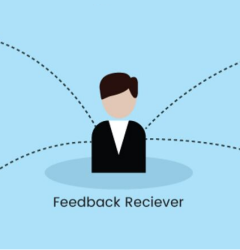09 Oct

Organizations become more productive when they build teams that are cohesive and motivated to work toward shared goals and complement each other to deliver extraordinary results. Let’s look at how building teams helps an organization.
- Organizations strive to build cohesive teams to create a solidarity which underlies the efforts of that team and helps it to achieve its goals, together.
- A team is defined by its common purpose and complementary skills which help it to accomplish the team’s shared goals.
- Some of these teams offer a superior competitive advantage to the organization through a deeper sense of purpose and a high level of performance.
- Organizations benefit from the high returns offered by cohesive, high-performance teams that far surpass anything the members could have individually contributed.
- Team building is definitely the way to go for organizations, as the benefits they reap help them succeed in a competitive advantage.
- The characteristics are a high-performance team include shared goals, shared sense of purpose, shared motivation, and a willingness to challenge themselves to reach ‘stretch goals’.
- As the team members bond, they choose to stay together and get consolidated, even as they move out of any low performers out of their team.
- Both monetary and non-monetary systems play their own part in encouraging high performance from teams.
- A leader is an essential requirement for any team, to keep it cohesive, focused, committed, and productive.
- Conflict is inevitable to any team activity, but the trick lies in staying connected and keeping the lines of communication open.
- Performance reviews and operating rules are incredibly important to the productivity and success of any team.
- HR teams help to keep a team together and provide ongoing support to keep them cohesive and performing to their potential.
Employers need to invest in the strategy and support system needed to build cohesive, high-performance teams so that they can succeed beyond their expectations.
Learn how PossibleWorks can help you
In Donne’s words, “No Man is an Island” and in the modern world, women are hardly islands either. How does this thought apply to the employees of an organization? Simple. Most organizations need their employees to believe in this and work together and not in silos. Employees are more productive in groups than as individuals, which is why building a team of a group of people who believe in teamwork is of paramount importance.
Teams keep your workforce cohesive – motivated toward their common goals. Let’s try to understand the need for building teams and how it helps with the performance standards of an organization, by looking at some important questions around them.
1. Why do organizations strive to build cohesive teams?
Team building activities encourage interaction and enhance the quality of their performance together as the members of a team. Such teams usually pass through common experiences when at work. It is not about participating in events and activities. It is more about building a spirit of solidarity that would pervade the interactions of the members of that team. Everyone gets to know and understand the personality traits of the others in the team. Together they can work cohesively to achieve their goals when they’re at work.
2. How do we define a team?
We are surrounded by teams. They form the backbone of contemporary workplaces. From creating and delivering products and services to running entire corporations, teams are to be found everywhere. They manage charitable activities and consult huge enterprises. They handle marketing and sales, ensuring customer satisfaction. A team is not defined by the number of people who constitute it. A real team has members who bring complementary skills to a common purpose and transcend their individual self-interests to accomplish a common set of goals.
3. What are high-performance work teams?
High-performance work teams are essential to the functioning of organizations. Their superior performance translates to a superior competitive advantage for the organization and helps it to ultimately succeed. Such teams exhibit a deep sense of purpose and are committed to their team’s mission. Their performance goals surpass that of the average team. Every member is aware of the responsibilities and obligations they have. They are also willing to be held mutually accountable. Their capabilities complement the abilities of their team members. The members trust each other and are dependent on each other to complement their output.
4. How go organizations benefit from encouraging team building?
It stands to reason to have organizations around the world keen on the idea of forming work teams. They wish to have one or more of them turning into a high-performance work team giving them high returns. High-performance work teams come up with innovative ideas and viewpoints while helping everyone in the team to learn new skills. Their sense of responsibility and accountability ensures that they execute organizational strategy and meet goals. They also meet their objectives and key results without much managerial supervision.
5. Given today’s technological changes and high levels of competition, is team building the way to go?
Organizations today depend on team structures for the many benefits they offer. Teams bring together a lot of diverse skills and problem-solving approaches. They apply multiple skills, experiences, and judgments to issues at hand to make better decisions. They execute tasks more quickly and resolve complex problems with more creativity than an individual contributor can ever achieve. Teams definitely outperform individuals and other types of working arrangements with their complementary contributions. High-performance teams also bond in a unique way and have great fun while delivering on their day-to-day tasks.
6. Could you name some characteristics of a high- performance team?
There is no single way to define a high-performance team. But they do have some common characteristics which set them apart. The team members understand how to work effectively as a group. They all share the same goals – a similar sense of purpose, a similar motivation, and a set of performance ethics. They know how to resolve conflict and communicate effectively. Their goals are synergistically making them come together as a team to achieve them. Their commitment to work is as high as their commitment to each other. They define their individual roles in the team with clarity. They all know their role and the role requirements to be effective and succeed as a team. They love to adopt ‘stretch goals’ to challenge themselves and stay motivated.
7. How do members get recruited to a high-performance team?
Teams usually come together when they start working on a specific project. In the course of it, they might realize how well they’re performing together. They tend to consolidate their team’s strength by moving out any low performers to other teams. Otherwise, such teams can be created by bringing members with complementary skills together. For a technology company, these would be technical, problem-solving, decision-making, and interpersonal skills. These will need to be supplemented by focus, commitment, and mutual respect within the team.
8. What role do monetary incentives play in encouraging high performance?

High-performance results from both monetary and non-monetary systems. Both exercises can impact the performance of the teams. For a high-performance team, there is an additional incentive in the form of personal satisfaction as well as the quality of the project being worked on. Research has shown that one’s belief in their own abilities also has an impact on their performance.
9. Does a team need a leader to keep it motivated and performing?
All teams need a leader to keep a team purposeful, goal-oriented, and stay relevant and meaningful in their approach. A leader builds the commitment and confidence of a team. Reviews with a leader help the team to identify their areas of development and helps them enhance their skills. Leaders also focus on eliminating any obstacles in the path of the team and on helping their progress. Most leaders do what is required to get the job done, which makes their existence imperative to any team.
10. How important is conflict and communication management to a team?
Conflict is inevitable in most interactions and teams are no exception to this. However, it can be managed by consciously keeping the lines of communication open. Motivate the members of the team to ensure cooperation and address any issues openly without any delay. It is the only possible way to manage such situations and keep them from escalating into further trouble.
11. Are teams required to follow a specific set of rules?
The behavior of any group benefits from having some rules to follow. Teams can improve their performance when they follow a system of regular performance evaluation. Most teams actually discuss and adopt a set of operating rules. They record their open agreement with the rules to eliminate later conflict. They also keep their lines of communication open and be willing to amicably resolve conflicts should they arise. Mutual respect and support among the members are also non-negotiable requirements for most teams. The team’s successes are shared, and the members are more focused on the results.
12. What role do HR teams play in building strong teams?
HR teams are essential to any organizational efforts in team building. They focus on the critical elements needed to aid the process. Their role could start with the selection of team members and ongoing support to its cohesiveness. With the mounting recognition of the importance of diversity to a team (be it in age, gender, or ethnicity), the opportunities for conflict also soar. The role of HR in creating an atmosphere where different viewpoints and working styles have equal respect contributes to the ultimate success of the team, and the organization itself.
As organizations pit themselves against their competition in a global arena, the members of a team could be living and working in different geographies and collaborating across time zones. Organizations could reap the benefits of encouraging such team-building efforts by providing the wherewithal in the form of technology and the means of communication. Teamwork is an essential component of productivity and employers need to invest some effort into mastering the tricky task of team building.



